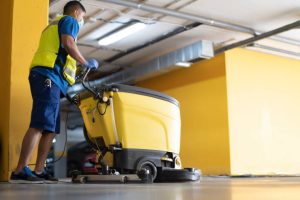The Ultimate Guide to Absorbent Materials for Emergency Spill Cleanup”
Spills—you either love them or hate them. From cleaning commercial floors to dealing with smaller incidents at home, emergencies demand the right tools. Ever tried mopping up a gallon of milk with a flimsy paper towel? Spoiler alert: It’s a nightmare. Here’s a deep dive into absorbent materials that’ll make spill cleanups less of a drag and more of a slam dunk.
Kitty Litter: Not Just for Cats
Don’t laugh. Kitty litter isn’t just for your feline friends. The highly absorbent nature of clay-based litter makes it a surprising MVP in spill cleanups. Got a messy oil spill in the garage? It’s like magic, but real. Plus, it’s quite affordable. Say goodbye to slippery floors and potential lawsuits!

Microfiber Towels: Superman’s Cape in Disguise
These bad boys are more absorbent than you might think. Microfiber towels can suck up an impressive amount of liquid without falling apart. They’re reusable, easy to clean, and an excellent option for regularly messy areas. And they don’t just absorb liquids. They grab onto dirt and grime too. So, if you’re chronically clumsy or just have kids, stock up. You’ll thank yourself later.
Industrial Absorbent Pads: Heavy-Duty Heroes
For large spills or hazardous materials, regular towels or kitty litter won’t cut it. That’s where industrial absorbent pads come in. Think of them as giant Band-Aids for spills. Made from polypropylene, these pads can soak up oils and chemicals while leaving surfaces dry. They’re perfect for warehouses, workshops, and even kitchens. A bit pricey, but worth it for those ‘oh-no’ moments.
Baking Soda: Small But Mighty
Surprised? Baking soda isn’t just for baking or deodorizing your fridge. It’s also a fantastic absorbent. Spilled some wine on your carpet? Ditch the panic and grab the baking soda. Voila! Wine? What wine? Also helpful for pesky grease spills in the kitchen.
Cornstarch: Your Secret Weapon
Cornstarch might be hiding in your pantry, but it’s got more uses than thickening grandma’s gravy. Spilled something greasy? Cornstarch to the rescue. It absorbs oils extremely well. Just pour it on, give it time to work its magic, and then sweep or vacuum it away. It’s the Cinderella of absorbent materials–humble yet incredibly effective.
Paper Towels: The Classic Performer
Ah, the humble paper towel. It might seem too basic, but don’t underestimate it. While not ideal for larger, industrial-type spills, it’s invaluable for small, everyday mishaps. Just be sure to invest in higher quality, thicker towels. Nobody has time for tearing and messes doubling due to flimsy paper. Keep a roll handy in your kitchen and near frequently messy zones.
Rice: For More Than Just Dinner
Rice isn’t just a staple food. Ever dropped your phone in water? That bag of rice can absorb liquids and save the day. But its absorbent properties don’t stop there. It’s fairly useful for tiny spills or when you’ve run out of other options. It’s like a Swiss Army knife of the pantry world.
Sawdust: Woodworking Wonder
Have a woodworking shop or just happen to have sawdust lying around? This material is highly absorbent and perfect for dealing with larger spills, especially oils and paints. Spread it out over the spill, wait a bit, then sweep it up. Clean, no muss, no fuss.
Old Newspapers: The Underestimated Tool
Old newspapers sitting in your recycling bin can double as handy absorbent materials. Lay them over spills, especially of the watery sort, and let them soak up the liquid. They’re free, easily disposable, and get the job done in a pinch.
Hydrogel: The High-Tech Solution
For the geeks out there, hydrogels are highly absorbent polymers that can take in huge amounts of liquid relative to their size. They’re often used in medical settings but have potential DIY applications. Interested in some science experiment turned practical solution? This could be your thing.
Expert Tips for Handling Chemical Spills on Commercial Floors
If you’ve ever managed a commercial space, you know that cleaning commercial floors is no walk in the park—especially when a bottle of cleaner decides to spill its guts all over the place. Yep, chemical spills can turn a regular day into an exercise in crisis control. Whether you’re the building manager, the janitor, or the hapless employee who knocked over the jug, dealing with chemical splashes effectively is crucial. No fluff, all substance, promise.
First things first—keep calm and assess the situation. Freaking out won’t do any good. Identify the chemical if you can. Most commercial cleaning supplies include strong chemicals like bleach, ammonia, or solvents that can be hazardous. Read the label. This initial step will keep you from mistakenly mixing chemicals, which could result in toxic fumes or worse.
Once you have a handle on what you’re up against, it’s time to protect yourself. Gloves, goggles, and sometimes even a mask are not optional here. Trust me, you don’t want to mess with your personal safety. After all, nobody wants a trip to the ER because they got a little too eager with bleach.
Now, how about containing this mess? Grab some absorbent materials—paper towels, cloths, or a spill kit if your workplace is well-prepared. Quickly surround and cover the spill to stop it from spreading. Remember, we’re stopping this runaway train before it does any more damage.
You’re not off the hook yet. Next up is removing the spill. For smaller, less damaging chemicals, you might get away with water and soap. But heavy-duty, hazardous chemicals need specific neutralizers. For instance, baking soda can neutralize acid spills. Vinegar might work on alkaline spills. Check your chemical’s Material Safety Data Sheet (MSDS) for suitable neutralizing agents. Don’t play chemist—get the details right.
Got lingering residues? Post-neutralization, clean the area thoroughly. Again, stick to recommended cleaning solutions. Don’t use bleach unless you’re 100% sure it won’t react with the spill residue. Better safe than sorry.
Communication is key here. Warn others by marking off the area with warning signs or tape. No one wants to walk into an invisible minefield.
Ever wondered if your floors feel like walking on glass post-cleanup? This could be because of soap or cleaner residues. This helps avoid slippery situations—literally.
But wait, there’s more. How about making sure this drama doesn’t replay itself? Regular training sessions for staff on handling spills turn out quite beneficial. Emergency spill kits readily available would be the cherry on top.
In wrapping up (but not concluding—no formal wrap-ups here), dealing with chemical mishaps on commercial floors needn’t be a herculean task. Remember these steps, add a pinch of common sense, and you should be golden.
So, next time you see a spill? Don’t see it as a problem. Who knew mopping could make you the day’s hero?
Needless to say, always listen to safety protocols and never cut corners—for real. You know how they say: better safe than sorry.






